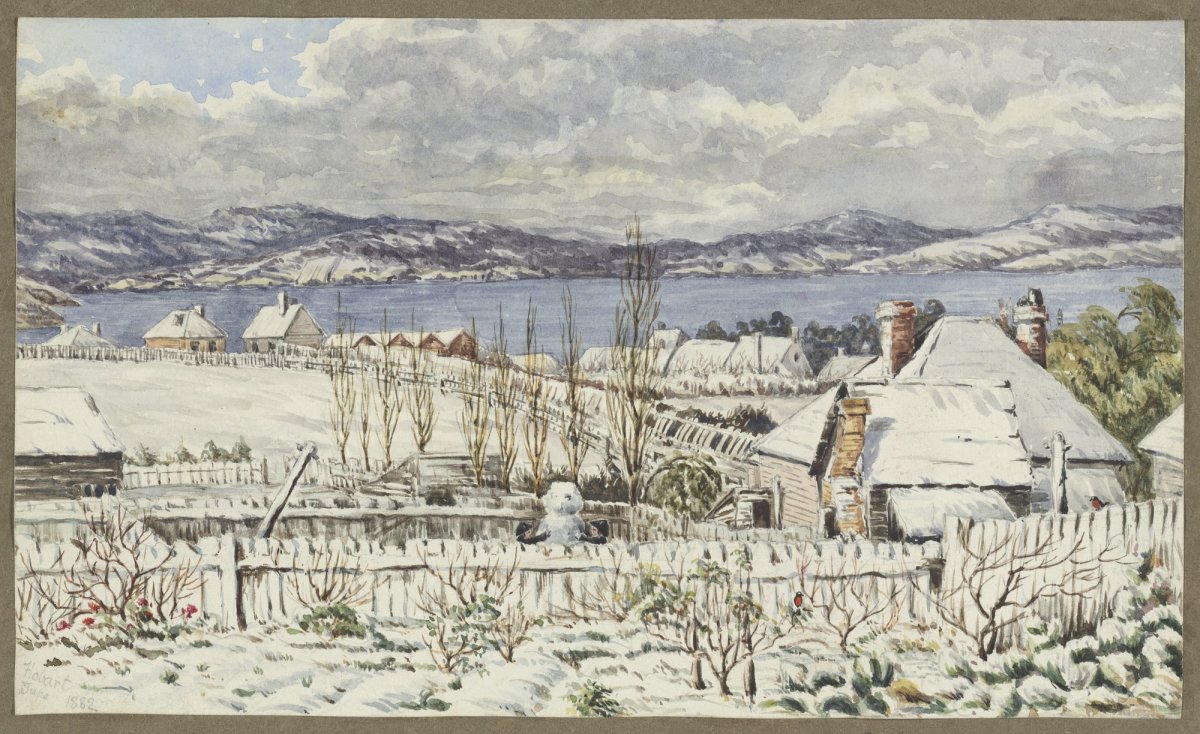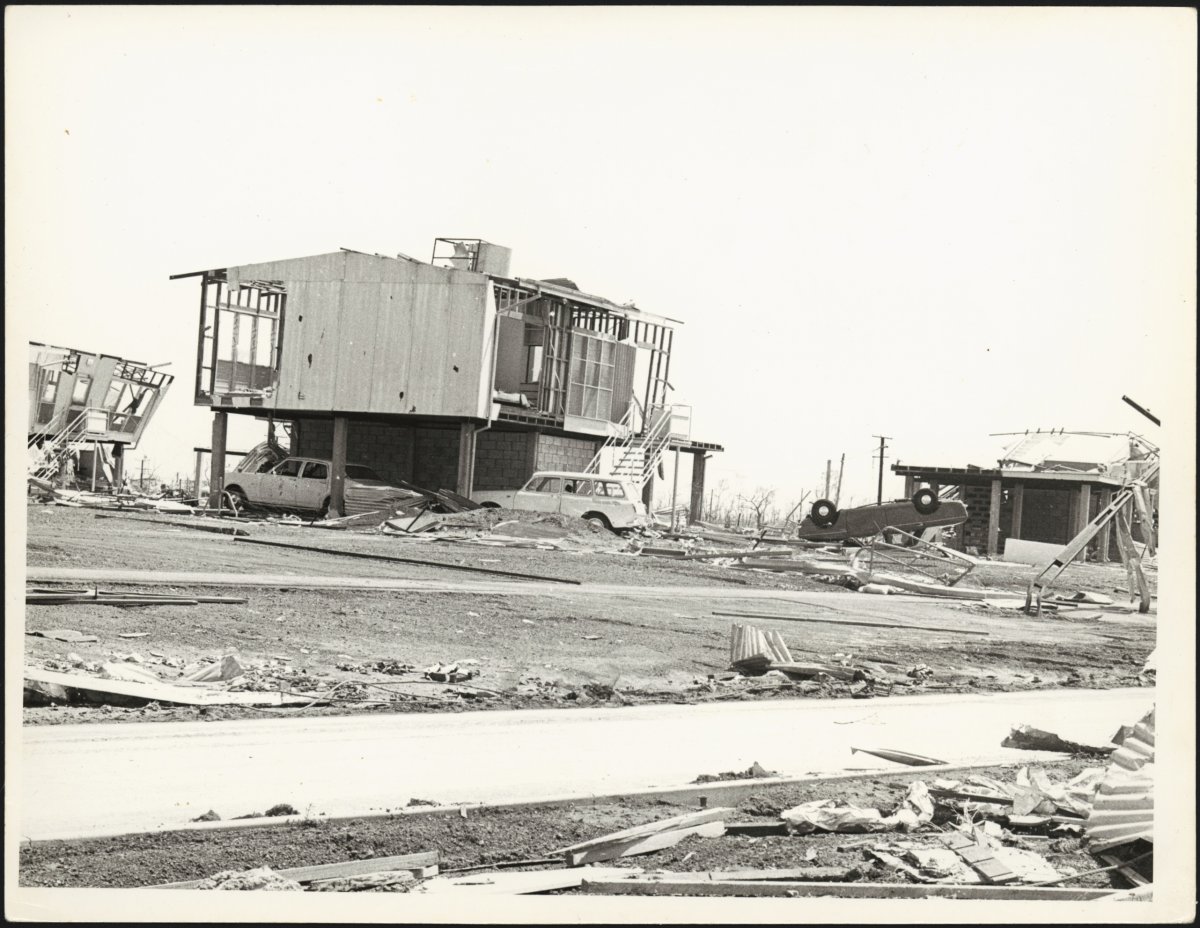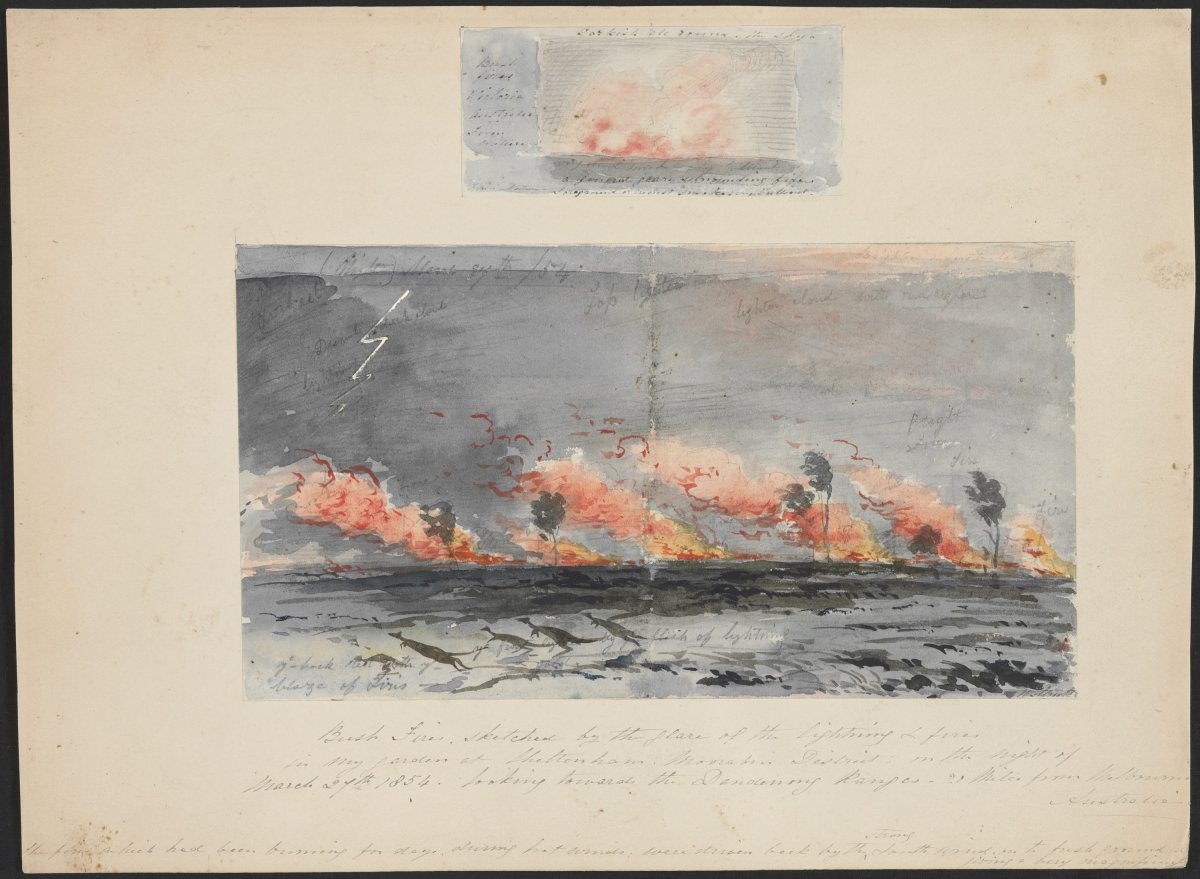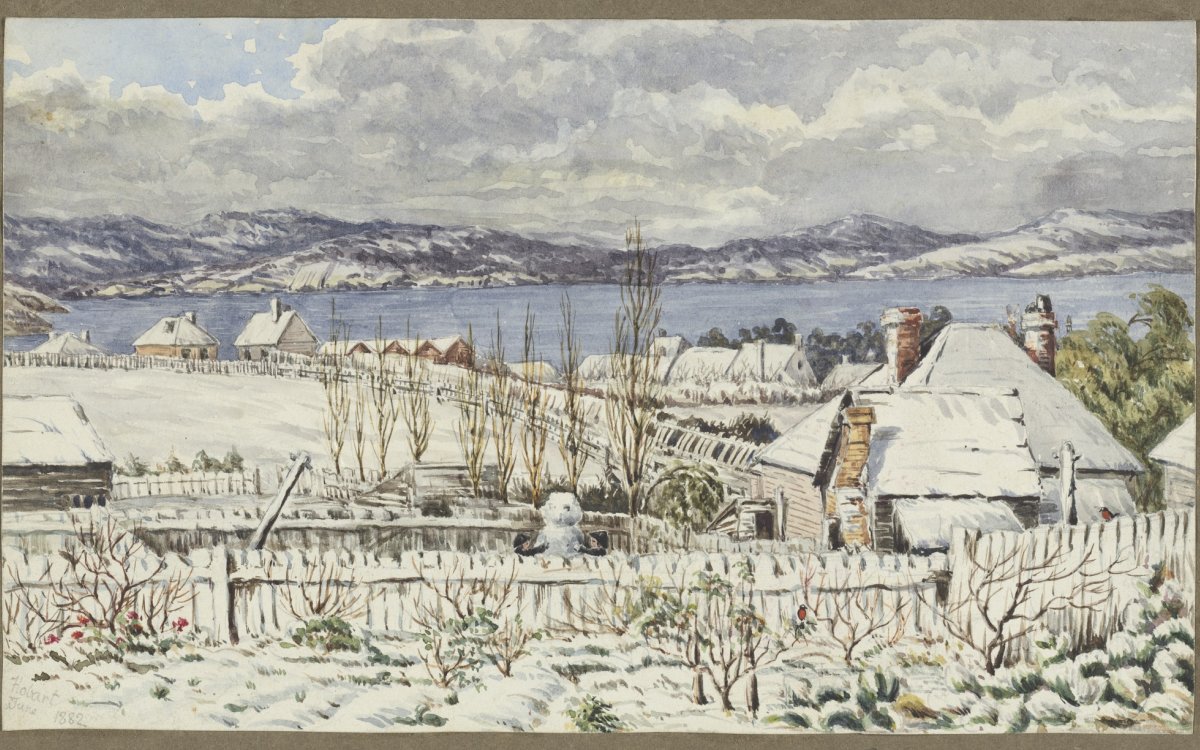
Graham, H. J. (Harold John), 1858-1929. (1882). Severe snow storm over Hobart [picture] / [H.J. Graham]. http://nla.gov.au/nla.obj-135529606
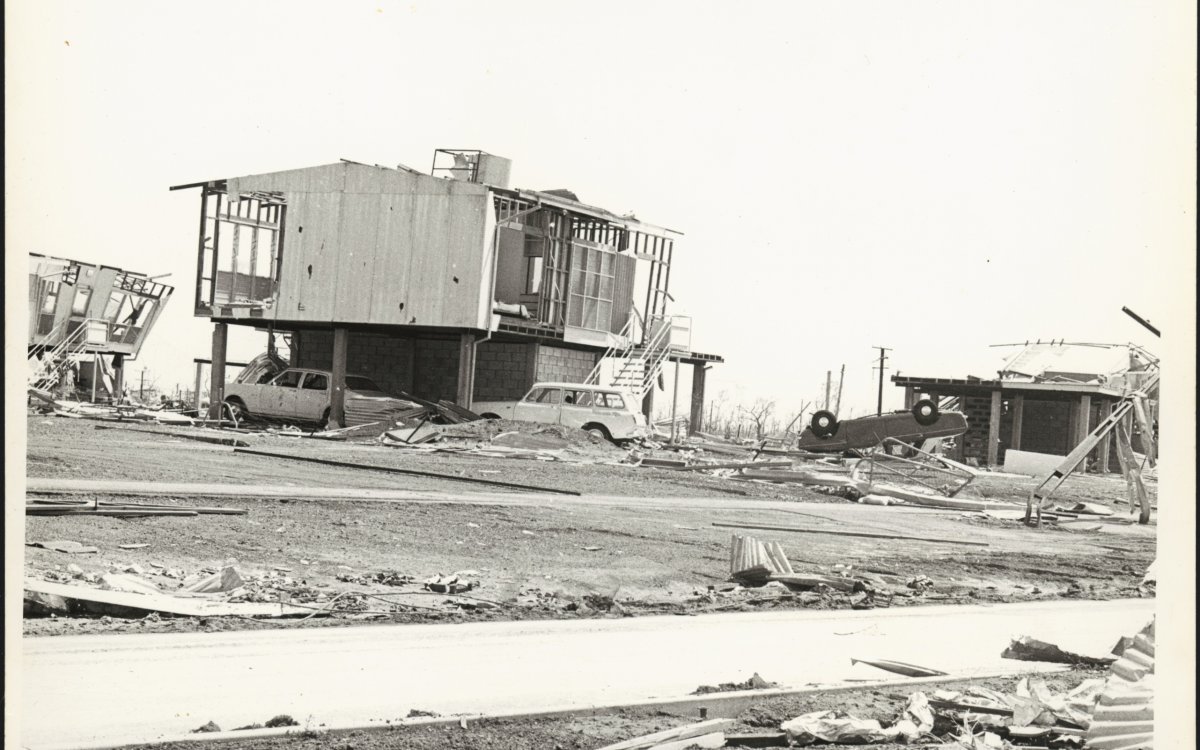
Dwyer, Alan, 1936-2017. (1974). Houses destroyed by Cyclone Tracy, Darwin, December, 1974 [picture] / Alan Dwyer. http://nla.gov.au/nla.obj-148903303

Strutt, William, 1825-1915. (1854). [Bush fires in the Moorabbin district] [picture] / W. Strutt. http://nla.gov.au/nla.obj-134768558
There are many stories of extreme weather and descriptions from those who survived the ordeals of droughts, bushfires, floods and cyclones in Australia.
Cyclone Tracy hit Darwin on Christmas Day, 25 December, 1974 and was described by Major General Alan Stretton:
In the early hours of Christmas morning, in the pitch black of night, in the ruins of their homes, in the torrential rain and the shrieking gale, families huddled together under beds, in cupboards and anywhere that gave them a chance of survival.
During disastrous weather humans must take shelter and fend off forces much greater than humans can bear. Australia is known for its extreme weather and there are countless photos documenting these disasters. Interviews like that of Major General Stretton can be researched and so can those of ordinary everyday people to give a better understanding of the impact of disastrous weather.
Activities
Disaster Strikes
Search the catalogue of the National Library of Australia or Trove to find accounts of disastrous weather.
Here are some examples to get you started:
- ‘Floods’, The Gnowangerup Star and Tambellup-Ongerup Gazette, 9 November 1940, p.2, nla.news-article158227133. https://trove.nla.gov.au/newspaper/article/158227133
- ‘The Weather: Hail Storm’, The Yass Courier, 13 December 1910, p.2, nla.news-article246632295. https://trove.nla.gov.au/newspaper/article/246632295
- ‘Ball Lightning’, Daily Mercury, 2 November 1953, p.10, nla.news-article169660249. https://trove.nla.gov.au/newspaper/article/169660249
- Jim McJannett, ‘The Great Cyclone Mahina and Tsunami and a Search for a Thursday Island Grave’, Torres News, 6 August 2008, p.4, nla.news-article254355730. https://trove.nla.gov.au/newspaper/article/254355730
After hearing or reading real-life accounts of disastrous weather, have students conduct a mock interview, and then make a creative response.
For the interview, they should:
- prepare a set of questions and possible answers
- record it as a video, making sure that both the reporter and the interviewee use appropriate body language, voice and gesture.
For the creative response, they could:
- develop a series of visual images for each natural disaster using mixed media (for example, paint, crayons, ink, collage, newspaper cuttings, quotes from poems, maps, keywords)
- create and perform a movement piece that expresses the emotional impact of a natural disaster using dance and music.
